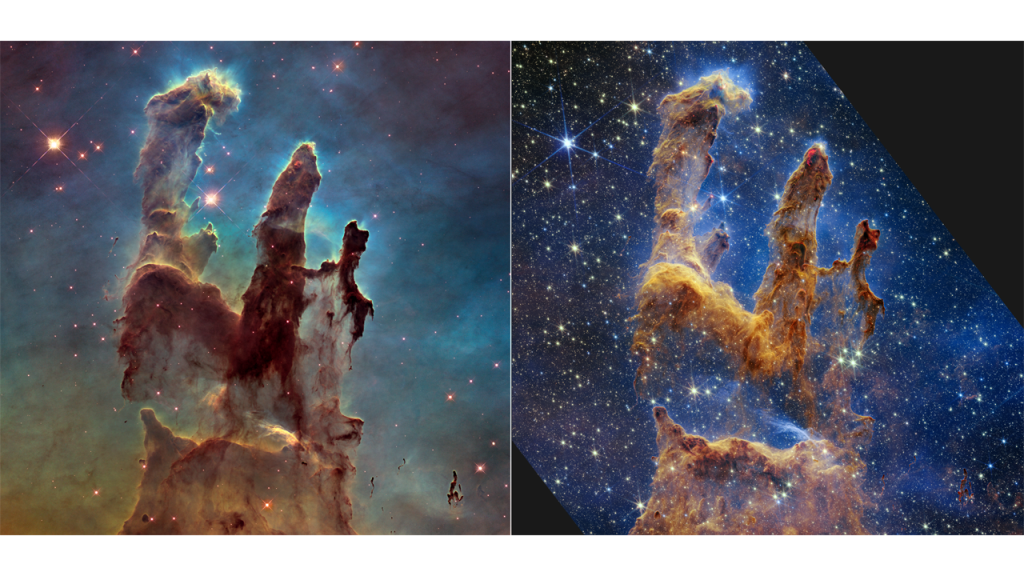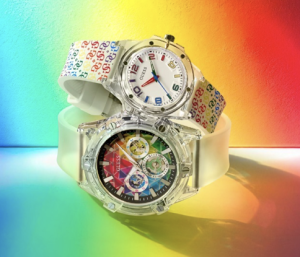James Webb Space Telescope Captures Image of “Pillars of Creation”
The James Webb Space Telescope (JWST) captured a new image of the “Pillars of Creation” in the Eagle Nebula, revealing details like hundreds of newborn stars. The Hubble Space Telescope previously captured image of the Pillars of Creation in 1995 and 2014, making them popular for the “fingers” jutting out from the Eagle Nebula.
The Hubble Space Telescope attempted to use its infrared-detecting instruments to peer inside the Pillars of Creation. The JWST’s more sensitive instruments can do the same in far more detail, making it possible to find objects like young stars that were invisible to the Hubble Space Telescope.
(Yes, the Hubble Space Telescope’s early “nearsighted” problem was fixed by a Space Shuttle mission. However, the technology for space telescope instrumentation has improved since its launch in 1990. The JWST has a newer, more sensitive near-infrared camera that is capable of taking pictures with more detail.)
In the JWST’s image, new details like a red glow at the Pillars’ “fingertips” were revealed. NASA says the glow comes from material ejected by still-forming stars at supersonic speeds that collided with other material in the clouds of dust and gas. The high-speed collisions create bow shocks that are similar to the wake created by a boat moving through water and transfers energy to hydrogen molecules, which makes them glow.

The Hubble Space Telescope took the image of the Pillars of Cration on the left in 1995. The JWST’s image is on the right.
The Eagle Nebula resides about 6,500 light-years away, in a part of the Milky Way that contains a mix of dust and gas in the densest part of the Milky Way galaxy’s disc. This dust and gas known as the interstellar medium can obscure views of the deeper universe beyond it.
The interstellar medium may be a little more noticeable in the Hubble Space Telescope image because it couldn’t peer through the dust and gas as well as the JWST can. With the JWST version, more stars are visible, though NASA says it is still difficult to see other galaxies through the interstellar medium.
The James Webb Space Telescope launched on December 25, 2021, giving astronomers a nice holiday present. Since its launch, JWST provided data that helped scientists determine the atmospheric composition of a “gas giant” exoplanet called WASP-96 b and study the chemical composition of ionized gas in a galaxy 13.1 billion light-years away.





